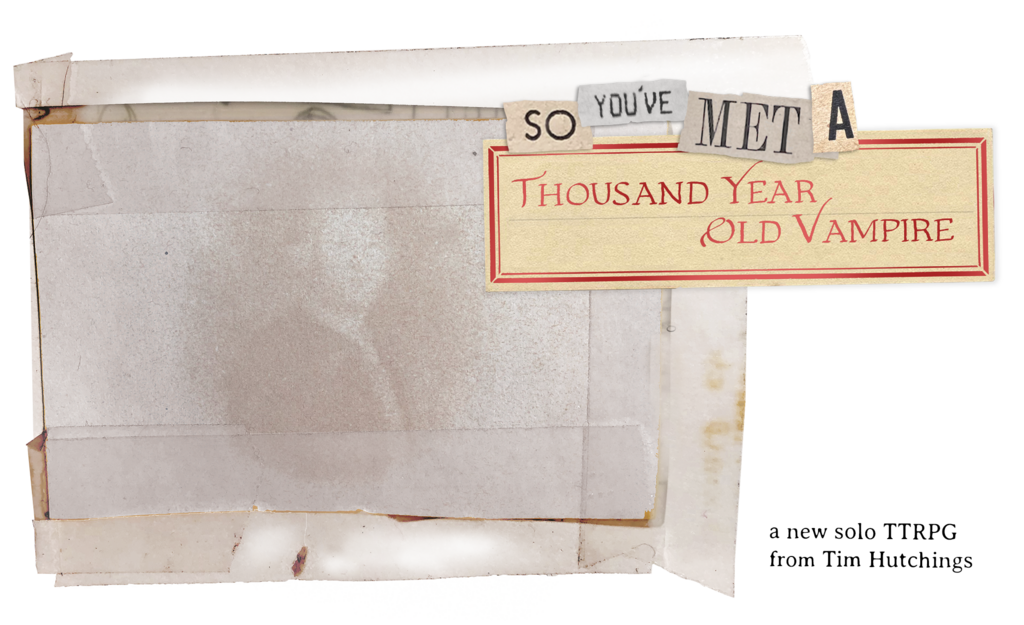Launching in:
days
hrs
min
sec


The true and direct descendant of and sequel to the award-winning Thousand Year Old Vampire. In TYOV style play as a person who has met an ancient predator who might want to eat you or who might just want to be your friend.

Familiar yet different, as things in a dream. Prompt-driven play builds intensity as it expands and explores your relationship with the vampire. Your Experiences are added to Arcs which both open up and constrain your play. There are no Resources here, but you still have Relationships who may or may not need to be protected from (or given to) the Vampire.
The Worm is a brand new narrative tool which can be retrofitted to the original TYOV. It supports themed play and allows for structured, interactive multiplayer games. More on that later.
This game will also allow for simple or complex play. Don't like the new bells and whistles? Then just answer Prompts–the game will survive.

The 600+ page book will be of the same award-winning high-quality as its predecessor. The minimal rules are easy to learn and no RPG experience is required! There will be hundreds of pages of collages which help with "I'm not sure what happens next" issues. Flip to a random collage, pick out a few elements and you now know where to go next.
I'm so excited to tell you that the Backerkit funding campaign for this book will be coming soon. -Tim H

NEW TO ALL OF THIS?
Thousand Year Old Vampire is a solo tabletop roleplaying game released in 2019. In the game you build up a body of Experiences that define who your Vampire is and then you begin to forget. During play your Vampire seems to exert a will of its own, forcing you to justify its crimes.
TYOV won three Ennie Awards and the Indiecade Tabletop Award–these are big deals in the RPG world.
Both of these games are designed by Tim Hutchings–a gallery artist turned game designer. Tim lives in Portland, Oregon where he no longer teaches university-level game design classes.

